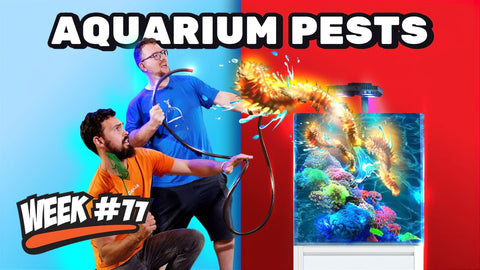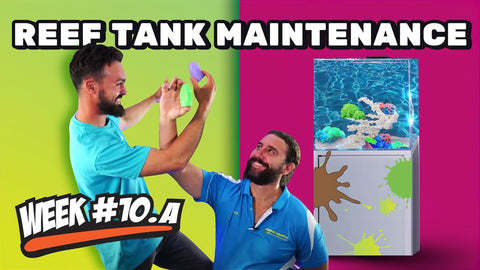Perfect Coral Placement | 12 Week Reef Video Tutorial #10B
Week 10B of the 12-Week Reef Tank: Advanced Reefscaping and Coral Placement Techniques
Welcome to Week 10 of the 12-week reef journey, where it’s time to take reefscaping to the next level. By now, your reef tank is coming to life with corals, fish, and stunning aquascaping, but as every experienced aquarist knows, a well-thought-out reefscape brings out the beauty of each species, creating a harmonious underwater environment. Let's dive into coral placement, creating coral islands of same species, and the difference between soft corals vs sps corals to enhance your reefscape and set it up for long-term health.
The Importance of Proper Coral Placement
When adding multiple corals to your reef tank, consider each coral’s growth pattern, space needs, and compatibility with others. Proper coral placement prevents aggressive corals from overwhelming delicate ones, balances light distribution, and keeps the tank looking vibrant and well-structured. By planning carefully, your reefscape will resemble natural coral formations while maximizing coral health and color.
Creating Coral Islands of the Same Species
A popular reefscaping technique is creating coral islands of same species. This method involves clustering corals of the same type, creating cohesive “islands” that mimic natural coral growth. Not only does this improve the visual appeal of your reefscape, but it also simplifies care, as corals of the same species tend to have similar requirements. For instance, grouping several soft corals together in a shaded area of the tank or placing various sps corals on a higher level with more intense light helps the tank stay organized and keeps maintenance manageable.
Soft Corals vs SPS Corals: What’s Best for Your Reefscape?
Knowing the difference between soft corals vs sps corals is essential when reefscaping a reef tank. Soft corals like leathers and zoanthids are typically more forgiving and resilient, ideal for beginner aquarists or tanks with more fluctuating parameters. They also tend to sway with water flow, adding dynamic movement to the reefscape.
On the other hand, SPS corals (small polyp stony corals) like acroporas are more rigid and often come in vibrant colors. These corals require stable water conditions, high light, and strong flow. When positioning them, it’s best to place them higher in the tank to receive sufficient light and flow. Mixing both soft corals and sps corals in one tank is possible, but careful coral placement ensures they coexist without stressing each other.
Practical Tips for Advanced Reefscaping and Maintenance
-
Test Your Water Regularly: Advanced reefscaping often means more coral additions, which in turn requires more regular water testing. Stable parameters, especially calcium, alkalinity, and magnesium, are crucial for sps corals.
-
Adjust Your Flow and Light: Place sps corals where they receive direct light and higher flow, while soft corals should be kept in more moderate conditions.
-
Reevaluate Coral Placement: Corals grow and adapt over time. Moving corals as they expand or recede ensures each coral has room to thrive without outcompeting others.
-
Clean Up Regularly: A well-maintained reefscape is essential for coral health. Clean protein skimmers and remove algae, especially near coral islands of the same species, to prevent competition for nutrients.
By following these advanced reefscaping tips, you can create a thriving, visually captivating reef tank that mimics the natural habitats of your coral species. Coral islands, mindful placement, and understanding the nuances of soft corals vs sps corals can make all the difference in building a sustainable, stunning reef.
Stay tuned for Week 11, where we add even more corals, delve into pest prevention, and explore advanced coral feeding techniques!





